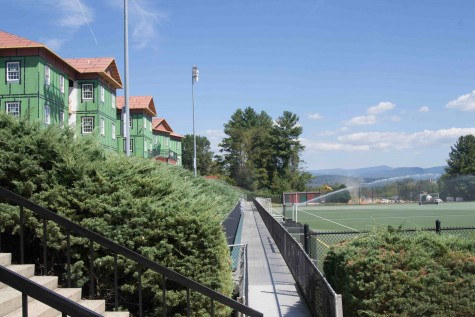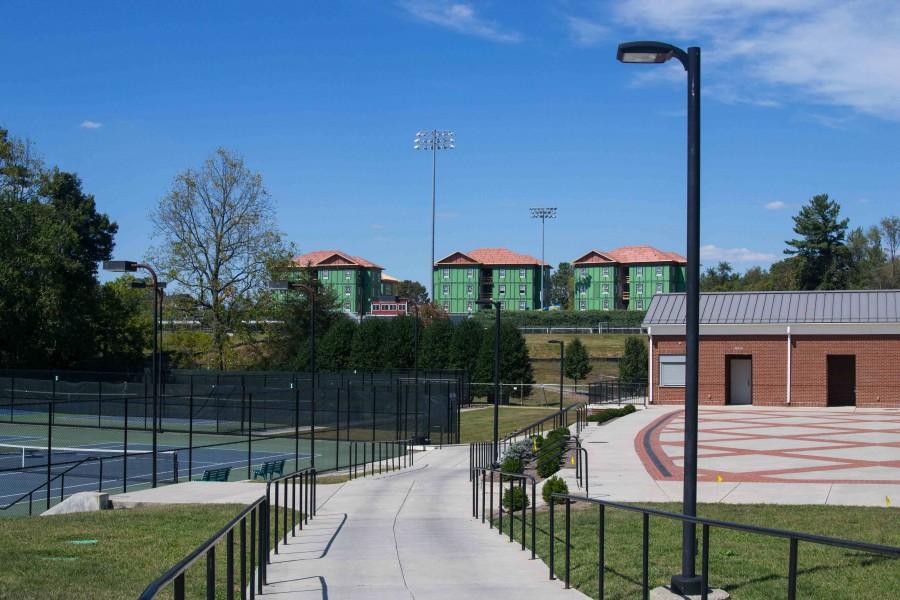New appearance, same ol’ W&L
September 21, 2015
Several groundbreaking changes await the Washington and Lee community as it embarks on a new school year. Gilliam Hall was recently bulldozed, President Kenneth Ruscio will resign at the end of the school year and construction on third-year housing is well underway.
Since W&L has been rooted in tradition for nearly 300 years, it is evident that these campus-wide changes will have a great impact on its history. The Ring-tum Phi staff believes that these changes will build upon W&L’s traditions to make the university even stronger.
Recently, the university said goodbye to one of the oldest dorms on campus, Gilliam Hall. Anyone who has lived in Gilliam vividly remembers its lack of air conditioning, its small bathrooms and its cockroaches. While Gilliam’s destruction means tearing down years of memories, it has paved the way for something even better.
A completely renovated Quad has taken the place of Gilliam. The Quad is more spacious and the intersecting area of Washington Street has been reconstructed to better accomodate pedestrians.
The end of Gilliam also means that top-notch living conditions will be available to more first-years than ever before. While it’s true that Gilliam has played a big role in W&L’s history, its absence will allow the university to create a new image, along with new traditions.
On a similar note, W&L’s president of nine years, Kenneth Ruscio, announced this summer that he will step down as president in 2016. A 14-member committee is busy reviewing applications for the next president.
In his time here, President Ruscio has honored W&L’s history by addressing tough controversies to the best of his ability. By next year, he will have prepared W&L for a new leader to take charge and further W&L’s mission.
Likewise, third-year housing marks the beginning of a new era for W&L. When the Board of Trustees voted unanimously to require third-year students to reside on campus in Feb. 2014, the decision generated much discussion in the Washington and Lee community. Previously, students were only required to live on campus for their first two years.
As construction on campus quickly progresses, the W&L community sees the new policy becoming a reality. Opinions on campus vary significantly. While some oppose the third-year housing requirement, others believe it will serve as an asset for the school.
Perhaps the most salient concern on campus is that the new requirement takes away from the W&L tradition of living off-campus as an upperclassman.
Students often view living off-campus as a right of passage in their W&L career. Greek life exacerbates this belief.
Many Greek organizations have certain houses that their members typically reside in off-campus. With the third-year housing requirement, some of these houses will no longer be occupied by students.
The decision will also put stress on landlords in the Lexington area, who typically rent these homes to undergraduate students.
This tradition also serves as a way to connect with Washington and Lee alumni. I have met alumni who attended Washington and Lee as far back as the 1980s, and we’ve bonded over frequenting and living in the same off-campus houses.
It is important to remember that seniors will still be able to live off-campus. Many of the favorite off-campus locations will continue to be rented to W&L students, if only for a year at a time.
While some in the W&L community resent the decision, there are also those who believe third-year housing will benefit W&L.
From an admissions standpoint, third-year housing may attract prospective students. Additionally, the new housing will be state-of-the-art. Prospective and current students will likely be enthusiastic about living in these spaces.
Many in the W&L community do not realize that expanding university housing has been discussed at W&L for decades.
A 1968 task study, similar to the one conducted in 2012, recommended that the university increase on-campus housing options for students. At that time, the university primarily housed first-years and sophomores, even though there wasn’t a sophomore requirement at that time. The university did not extend housing options to upperclassmen due to financial reasons.
Upperclassmen lived off-campus out of necessity and over time, off-campus living became a tradition for older students.
It’s clear that the face of W&L has changed and will continue to change dramatically. However, its values and beliefs have not.
Even with some new buildings and a renovated Quad thrown into the mix, our community will continue be centered around trust and honor.
These campus-wide changes will cultivate new traditions, while preserving the ones that we all cherish today.



